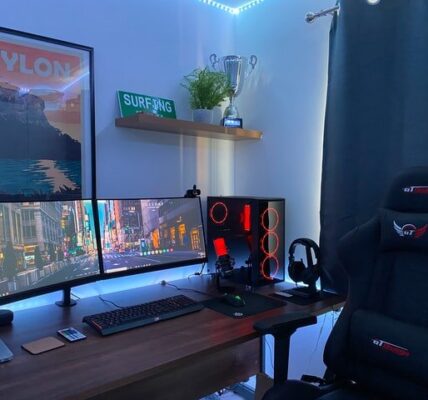In the digital age, the heart of every computing device is its processor. The computer processor has undergone an astonishing evolution over the years, reshaping the way we work, communicate, and enjoy our leisure time. This article takes you on a journey through the comprehensive history of computer processors, from their humble beginnings to the cutting-edge innovations of today.
The Birth of Computer Processors
The story of computer processors begins in the mid-20th century. In 1947, physicists John Bardeen, Walter Brattain, and William Shockley developed the first transistor at Bell Labs. This tiny invention paved the way for the creation of computer processors. Transistors are the building blocks of processors, and their discovery marked a monumental breakthrough in the world of technology.
The First Generation: Vacuum Tubes
The first generation of computer processors used vacuum tubes for data processing. These early computers, such as the ENIAC and UNIVAC, were colossal in size and generated an enormous amount of heat. They were not only expensive to build but also required a dedicated team of operators. Despite their limitations, these pioneering machines laid the foundation for modern computing.
The Second Generation: Transistors
The 1950s saw the advent of transistor-based processors. Transistors were faster, more reliable, and significantly smaller than vacuum tubes. Computers like the IBM 1401 and UNIVAC 1107 made use of this technology. These machines were more affordable and could fit in standard office spaces, ushering in the era of commercial computing.
The Third Generation: Integrated Circuits
The 1960s brought forth a game-changer: the integrated circuit. This invention, which crammed thousands of transistors onto a single chip, allowed for even smaller and more powerful computers. The IBM System/360 and the PDP-8 were some of the notable computers that utilized integrated circuits. This era saw an explosion in the number of applications for computing.
The Fourth Generation: Microprocessors
The 1970s marked the birth of the microprocessor, a single-chip CPU. Intel’s 4004 and 8080 microprocessors were at the forefront of this revolution. These chips were not only powerful but also cost-effective. They brought computing into homes and smaller businesses, making it more accessible to the masses.
The Fifth Generation: Modern Microprocessors
The 1980s and beyond have witnessed a relentless pursuit of smaller, faster, and more efficient microprocessors. Companies like Intel, AMD, and ARM have consistently pushed the boundaries of what is possible. With each generation, processors have become more energy-efficient and capable of handling increasingly complex tasks.

The Rise of Multicore Processors
As we moved into the 21st century, the demand for multitasking and high-performance computing grew. This led to the development of multicore processors, which contain multiple processing cores on a single chip. These processors have become the backbone of modern computers, smartphones, and even gaming consoles.
The Latest Innovations
Today, we find ourselves in the age of cutting-edge innovations in processor technology. We have seen the rise of 7nm and even 5nm fabrication processes, enabling smaller and more power-efficient chips. Quantum computing, a radical departure from classical processors, holds the promise of solving problems previously considered unsolvable.
Conclusion
The evolution of computer processors has been nothing short of remarkable. From the days of bulky vacuum tube computers to the era of quantum computing, these tiny chips have transformed the world in ways unimaginable. As we move forward, the future of computer processors is certain to be filled with exciting developments, pushing the boundaries of what technology can achieve. Feel free to visit Corporate Art Loan to find more tips and information about technology.











